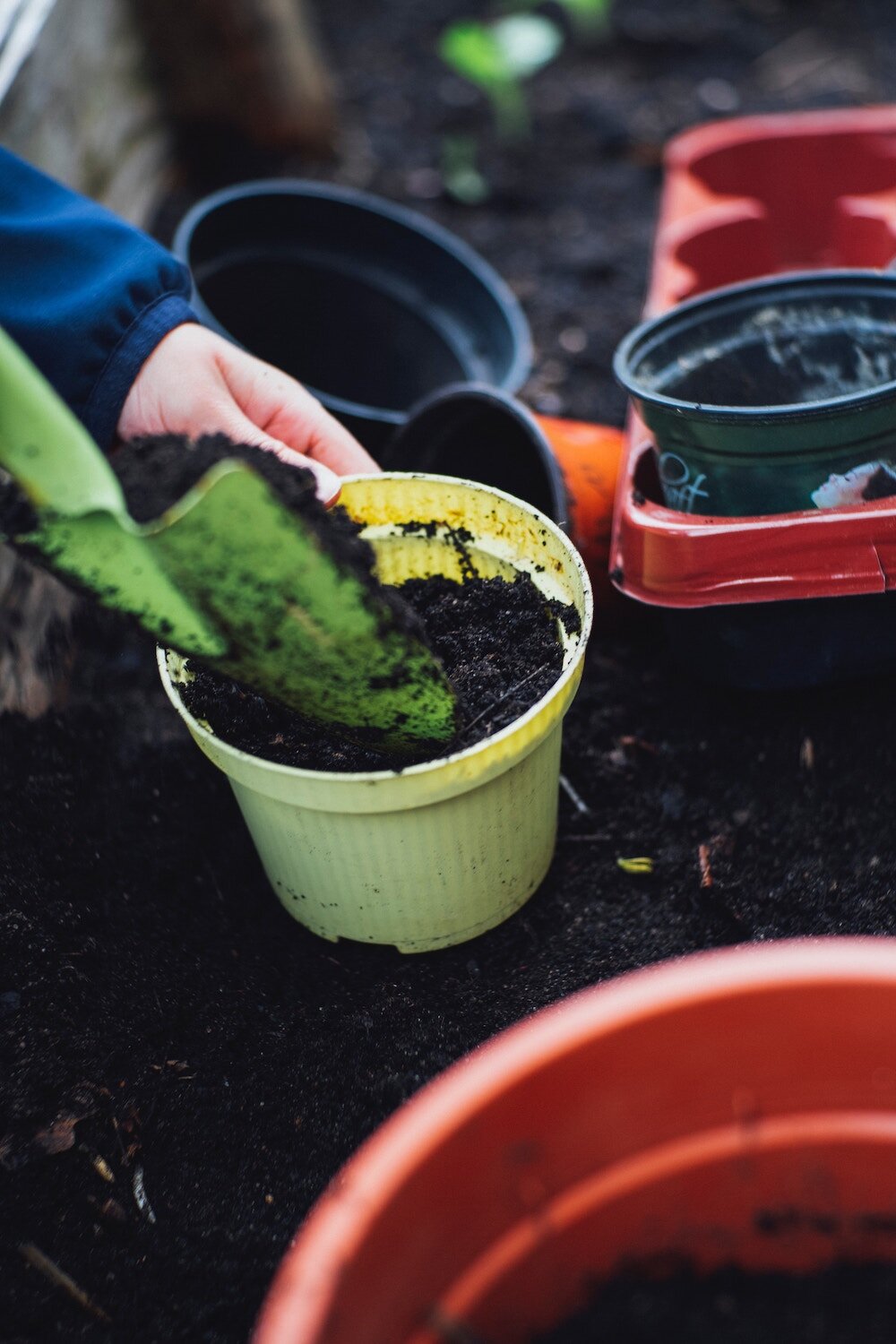8 Ways You Can Be More Sustainable in the Garden - And Reap The Rewards!
Is one of your goals this year is to be more sustainable in the garden?
Climate change is certainly at the forefront of people’s minds and it is important to consider how we can all live a more sustainable life.
Being sustainable in the garden means being mindful of our activities and making an effort to do things like conserving water and other resources, recycling or reducing waste and re-using items where we can.
Here are just some of the ways we can incorporate sustainable practices and have a more thoughtfully planned garden.
Look after your soil
This is where it all starts. A good, fertile soil is the cornerstone of a great garden. By regularly adding organic matter to the soil, you can improve the soil structure. This means you will develop a greater water holding capacity, along with better drainage and a more nutrient rich soil. What’s ‘organic matter’ I hear you ask? Organic matter is animal or plant material in various stages of decomposition. It includes compost, mulches, animal manures and organic fertilisers like seaweed and fish emulsions. As organic matter decomposes, it slowly releases nutrients that are available for the plant roots to take up. The resulting humus is a black crumbly material that gardeners go crazy for and your plants will love!
2. Start composting
Compost can be used as a fertiliser under mulch, a soil improver or potting mix. On top of that, it’s a great way to help manage household waste. Lawn clippings, fruit and vegetable scraps, as well as shredded paper and cardboard can all be added to your compost. Check your local council website for a complete guide to composting and start reducing your household waste and recycling it into one of the most beneficial products you can produce yourself.
3. Plant Trees
Shady trees help to keep everything that bit cooler, reducing the need for air conditioning and can be a standout feature in your garden. Trees reduce the air temperature by 5 degrees and can have a significant impact on home energy costs. Trees should be appropriately sized for your back yard – one that will grow to around 8m is big enough for the average suburban backyard. Brisbane City Council has a free native plant program allowing residents to add to Brisbane’s urban forest and support local wildlife.
4. Water wise gardening
Choose plants that are suited to the local area and the local climate and soils. These plants will be much hardier and able to stand up to the local weather conditions. Group plants that have similar watering requirements together to make the best use of water.
5. Rainwater tanks
Install a rainwater tank to harvest rainwater and install a water-efficient irrigation system. Your own water source can make a real difference during dry times, especially when experiencing water restrictions.
6. Permeable surfaces
Having surfaces that are permeable such as gravel, stepping stones, lawn will allow water to drain away and soak into the ground. Directing the flow of water into garden beds will help manage storm water and reduce flooding issues.
7. Grow your own
Growing your own fruit and vegetables is a great way to save some money, teach kids where our food comes from, reduce food miles, and can lead to a whole new appreciation of organic gardening and the little eco-systems we have in our own backyards. It’s great fun and has been the start of a wonderful hobby for many a passionate gardener. Start with some herbs or tomatoes or lettuce and go from there or challenge yourself to try something different.
8. Encourage wildlife
Encourage birds and bees and other pollinators to make use of your backyard. Include a water bowl or bird bath in your garden with some large stones or sticks to act as perching points for safe drinking. Rocks or logs can become shelters for lizards, frogs and other wildlife. A layered garden of trees, shrubs and ground covers will provide habitat for all sorts of wildlife that can help with organic pest control.
Are you keen to start your veggie patch? Do you need help establishing a water wise garden? Would you like help including some or all of these ideas into a sustainable design at your place? Call me to chat about the possibilities.
Enjoyed this post? Share with your friends…
Follow me on:







